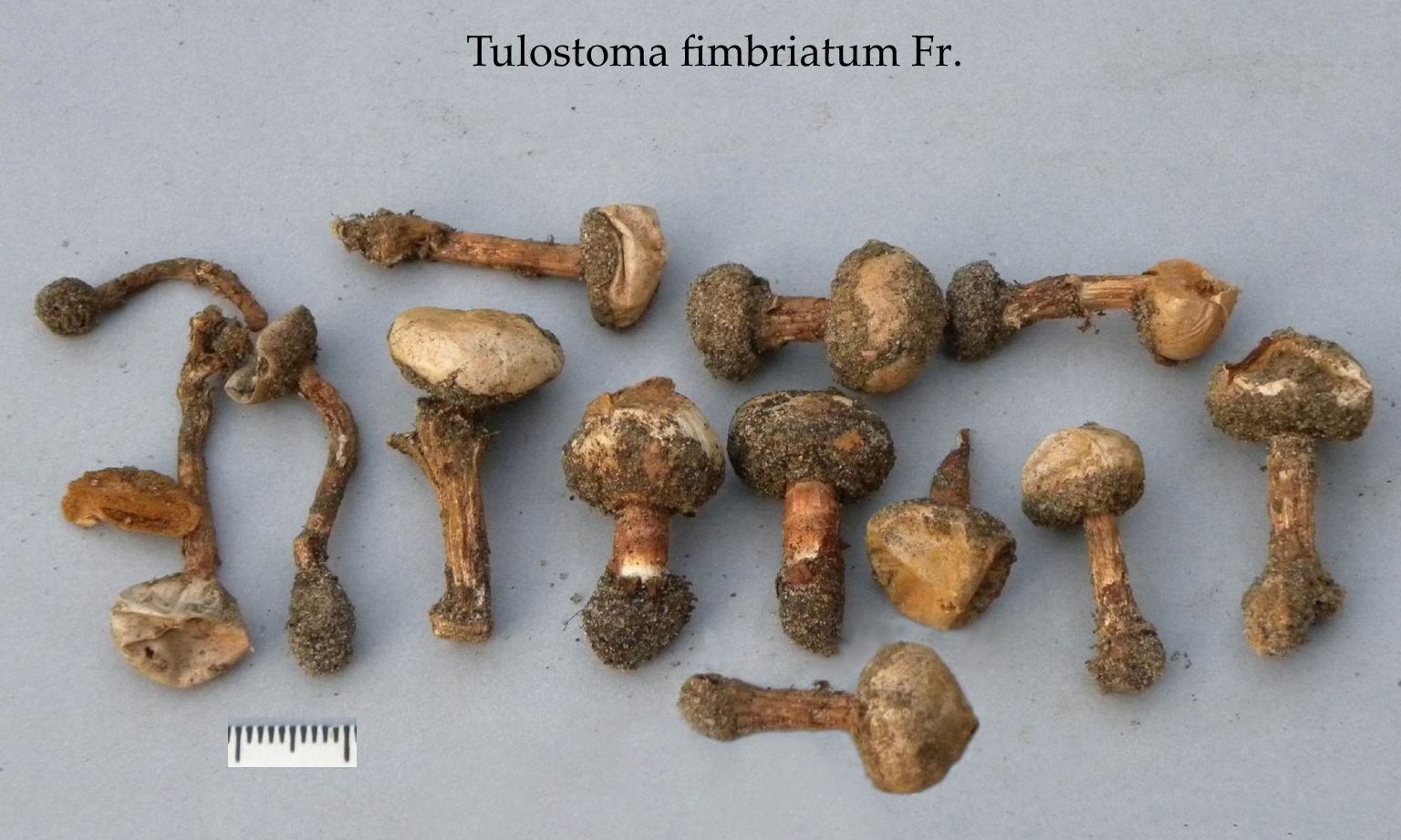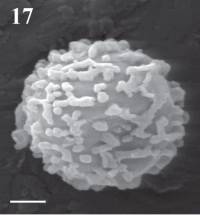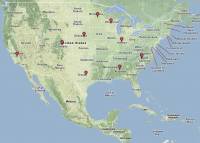
|
|
|
|
Family: Agaricaceae
|
Wright J.E. 1987. Bibliotheca Mycologia 113: 105. Tulostoma fimbriatum Fries (Figs. 50, 53-54; Pls. XX: 1-2; XLII: 7) - Systema Mycologicum III: 1169. 1821. = T. granulosum Léveillé in Demidoff, Voyages Russie merid., p. 120, tab. IV, fig. I. 1842. = T. brachypus Czernaiev, Bull. Soc. Im. Nat. Moscou 18: 144. 1845. = Schizostoma granulosum Lév., Ann. Sci. Nat., 3 sér. V: 115. 1846. = Schizostoma fimbriatum (Fr.) Lév., ibid. V: 165. 1846. = Tulasnodea fimbriata (Fr.)Fr., Summa Veg. Scand. 2: 440. 1849. = Tulostoma granulosum Lév. var. vittadini Petri, Fl. Ital. Critt. 5: 131. 1904. = T. vittadini Petri, Nuovo Gior. bot. Ital. 11: 15-16. 1904. = T. granulosum Lév. var. magnusianum Bres, in Sydow, Mycotheca Germanica n° 2263. Etym.: The name refers to the fimbriate nature of the mouth. [description of typical variety only] Spore-sac up to 15 mm diam, globose, generally well adhered to the stem. Exoperidium distinctly hyphal, with the hyphae agglutinated with sand grains, sometimes rather loosely, forming a more or less persistent to deciduous basal band. Endoperidium sordid cinereous white, sometimes with slightly metallic glister, or ochraceous-greyish, generally smooth but often with the scars of the sand grains quite visible, tough, when old and weathered it may become parchment-like. Mouth typically fibrillose-fimbriate, sometimes slightly mammose, and may become denticulate with age, in many specimens exhibiting a typical granulose or punctate aspect. Socket most times inconspicuous, shallow, with the membrane subentire or lacerate. Gleba ochraceous to light brown or ferrugineous. Stem up to 50 x 3 mm, straight or slightly tapering downwards, smooth to squamulose, brown to reddish brown, generally dirty brown, lighter when old, squamules normally appressed but sometimes erect, appearing squarrulose, sometimes with 2-3 longitudinal furrows. Exoperidium formed by interwoven brown hyphae. Spores densely and conspicuously verrucose under L.M., globose to subglobose, light brown, 4.3-5.7-(6) x (3.6)-4.6-5.1 µm. Under SEM the ornamentation appears as thick, uneven, appressed verrucae, some tending to become deformed in Y-shaped crests, but generally little anastomosed. Capillitium hyaline to slightly yellowish, branched and scantily septate; threads 3.5-6-(7.7) µm diam, thick-walled, lumen visible to lacunar or solid, somewhat enlarged at the slightly coloured, disjointable septa. Habitat: in sandy soil of steppose sites in relatively warm regions. Distribution: it is a typically European species, and probably the most common one, and mayhave been introduced in other regions. Holotype: not found. Illustration: Lloyd (1906, pl. 84, figs. 1-4 as T. granulosum (Lév.); Pouzar (1958, figs. 221-222). |









